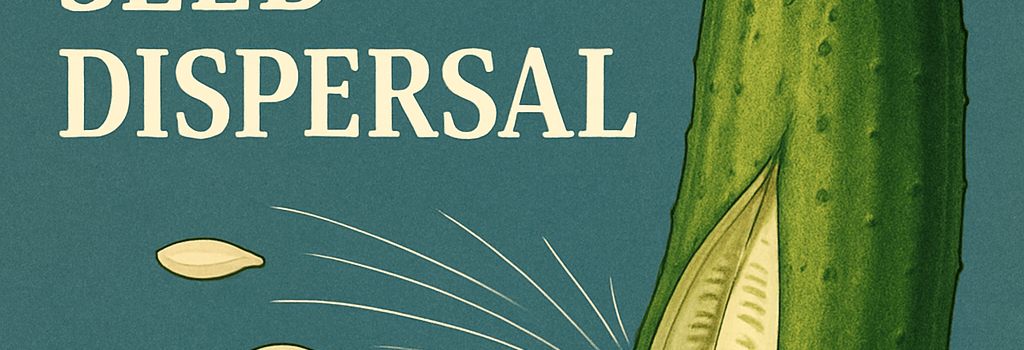Biomechanics of Cucumber Seed Dispersal

In plant physiology, seed dispersal is a critical step for species propagation. Cucumis sativus—commonly known as the cucumber—employs a ballistic mechanism that launches its seeds at remarkable speeds, ensuring they land meters away from the parent plant. Many factors must interact perfectly to disperse the seeds efficiently without destroying the plant too early.
Mechanism of Seed Ejection
The process begins as cells in the fruit wall accumulate water, generating internal turgor pressure. At maturity, specialized “suture” tissues act like a biological valve:
- Elastic cell walls store mechanical energy up to 0.6 MPa
- Asymmetric contraction of epidermal layers creates shear forces
- A rapid rupture of the suture releases stored energy in milliseconds
When the seam bursts open, seeds exit through a narrow pore. This aperture functions similarly to a miniature nozzle, converting pressure into kinetic energy and propelling seeds outward.
Technical Specifications
- Launch velocity: up to 15 m/s (54 km/h)
- Acceleration peak: approximately 20,000 g
- Seed mass: 4–6 milligrams per seed
- Aperture diameter: 0.3–0.7 mm
- Energy per ejection: roughly 0.5–1.2 millijoules
Experimental Analysis with High-Speed Imaging
Researchers employ high-speed cameras and micro-CT scanning to analyze the event:
- Camera model: Photron FASTCAM SA-Z recording at 100,000 fps
- Resolution: 1024×1024 pixels for precise motion tracking
- Micro-CT: non-destructive imaging of the suture region under load
Frame-by-frame analysis reveals that the fracture zone propagates at nearly 1 m/s before full rupture, ensuring synchronized release of multiple seeds.
Ecological and Evolutionary Significance
This ballistic dispersal offers several advantages:
- Reduces intraspecific competition by spreading seeds meters away
- Helps escape seed predators that forage near the mother plant
- Synchronizes release with environmental triggers such as humidity drops
Evolutionary models show that plants with more efficient valves have a 30% higher germination rate compared to passive dispersers.
Potential Biomimetic Applications
Engineers are studying cucumber biomechanics to develop next-generation microfluidic valves and soft actuators:
- Self-resetting fluidic switches inspired by cell-wall elasticity
- High-speed dispensers for precision agriculture and drug delivery
- Energy-efficient mechanisms for microscale robotics
The seed-launch mechanism in cucumbers illustrates how natural systems optimize energy storage and rapid release in a compact form factor
— Dr. Jane Doe, Plant Biomechanics Expert